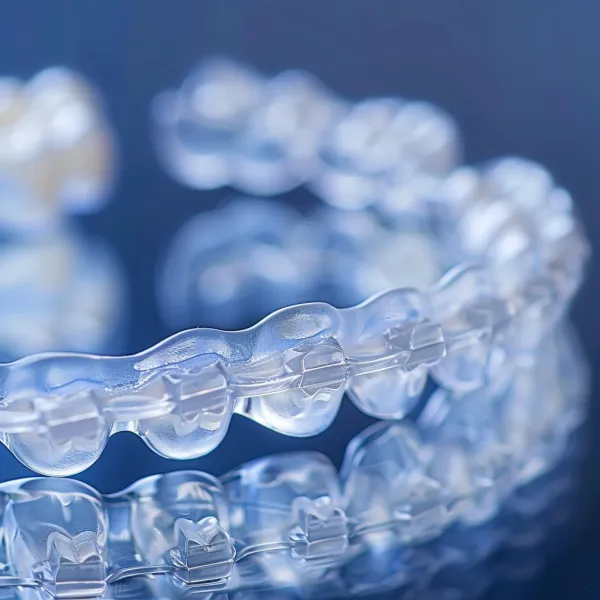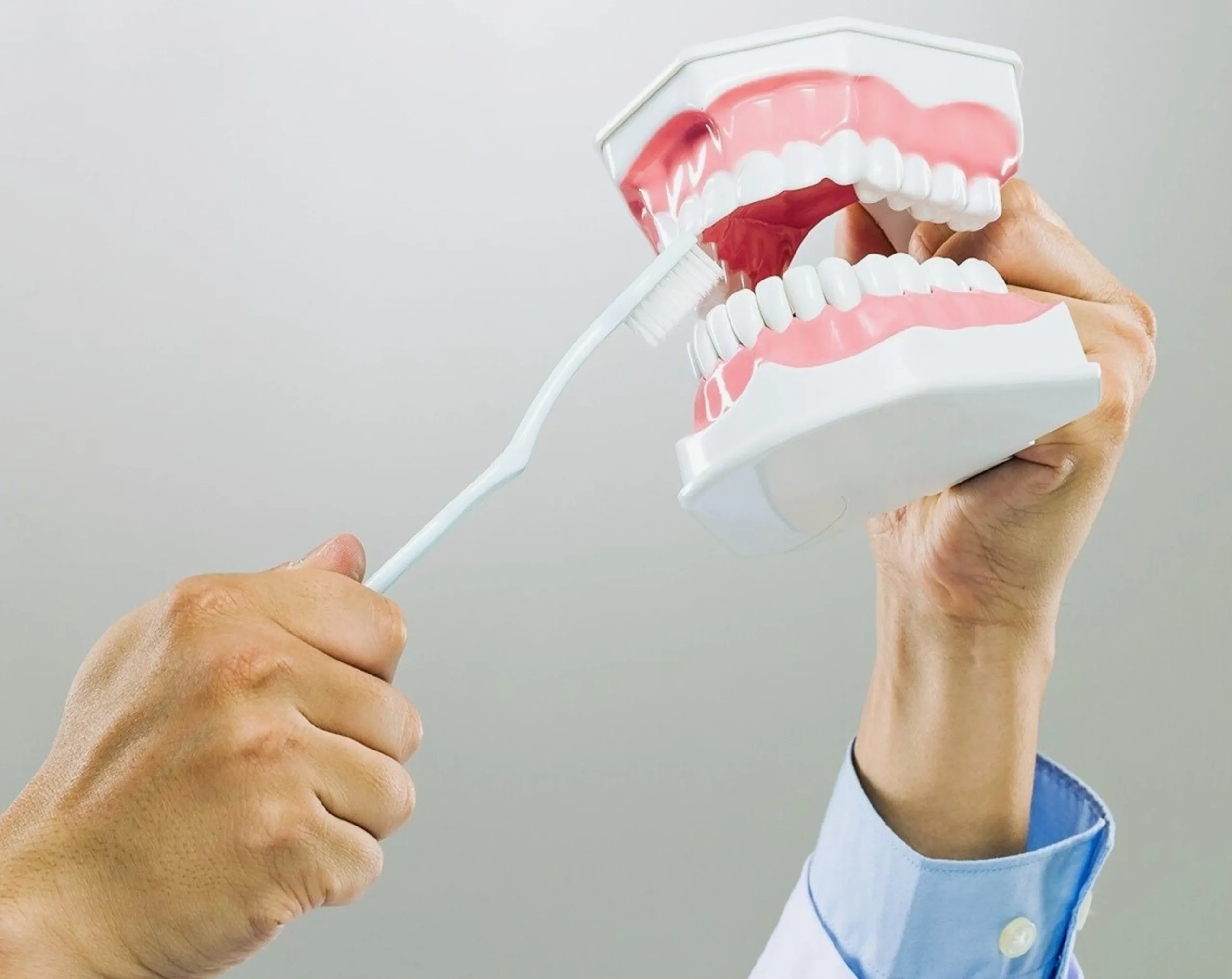Is Invisalign Faster Than Braces? A Comparison of Orthodontic Treatment Speeds
When it comes to straightening teeth, many people wonder if Invisalign is faster than braces. The answer, as with most things, is that it depends. Invisalign treatment can be faster than traditional braces in some cases, but not always. Factors such as the severity of the case, patient compliance, and the type of braces being compared to Invisalign can all affect treatment time.
In general, Invisalign treatment can take anywhere from a few months to a year or more to achieve the desired results. This is comparable to the treatment time for traditional braces. However, some patients have reported that Invisalign treatment felt faster than braces because they were able to see progress more quickly and did not have to deal with the discomfort and inconvenience of metal brackets and wires. Ultimately, the decision between Invisalign and braces should be based on a variety of factors, including treatment time, cost, and personal preference.
How Invisalign Works
Invisalign is a modern orthodontic treatment that uses a series of clear, removable aligners to straighten teeth. The aligners are custom-made for each patient using advanced 3D imaging technology. They are made of a smooth, comfortable, BPA-free plastic that won’t irritate the gums or cheeks.
The aligners are worn for about 22 hours a day, and each set is worn for two weeks before being replaced with the next set in the series. Each set of aligners is slightly different, gradually moving the teeth into their desired position.
Invisalign works by applying gentle, constant pressure to the teeth, gradually shifting them into the desired position. The aligners are designed to move the teeth in small increments, so patients may not notice much movement from one set of aligners to the next. However, over time, the cumulative effect of the aligners adds up to a significant change in the position of the teeth.
One advantage of Invisalign is that the aligners can be removed for eating, drinking, brushing, and flossing. This makes it easier to maintain good oral hygiene during treatment. However, it’s important to wear the aligners for the recommended amount of time each day to ensure the best possible results.
Overall, Invisalign can be an effective and convenient alternative to traditional braces for many patients. However, it’s important to consult with an orthodontist to determine if Invisalign is the right treatment option for your specific dental needs.
How Braces Work
Braces are orthodontic devices that use brackets, wires, and bands to apply pressure to the teeth and move them into the desired position. The brackets are attached to the teeth using a special adhesive, and the wires are then threaded through the brackets and adjusted over time to gradually move the teeth.
The pressure applied by the braces causes the bone around the teeth to remodel, allowing the teeth to move into the correct position. The length of time needed for the treatment depends on the severity of the case and can range from 20-24 months on average.
During the treatment, patients must visit their orthodontist regularly to have the braces adjusted and to ensure that the teeth are moving correctly. The orthodontist may also use additional appliances, such as rubber bands or headgear, to help with the movement of the teeth.
While braces are effective in correcting various orthodontic problems, they can be uncomfortable and may cause some pain or soreness after adjustments. Patients must also avoid certain foods that can damage the braces, such as hard or sticky foods.
In summary, braces work by applying pressure to the teeth to move them into the desired position. The treatment can take up to 24 months and requires regular adjustments by an orthodontist. While effective, braces can be uncomfortable and require some dietary restrictions.
Factors Affecting Treatment Time
Invisalign
Invisalign treatment time can vary depending on several factors. The type of occlusion or spacing you have can impact treatment time. If you have a more severe case, it may take longer to achieve the desired results. Additionally, compliance with wearing the aligners can greatly affect treatment time. If the aligners are not worn as directed, it can delay progress and prolong treatment time.
The number of aligners needed can also impact treatment time. Each set of aligners is typically worn for two weeks before being replaced with the next set. If more aligners are needed to achieve the desired results, it will naturally take longer to complete treatment.
Braces
The type of braces used can impact treatment time. Self-ligating braces typically finish treatment a few weeks faster than traditional braces. Additionally, compliance with appointments and proper care of the braces can greatly affect treatment time. If appointments are missed or brackets and wires are damaged or broken, it can delay progress and prolong treatment time.
The severity of the case can also impact treatment time. If there is a significant amount of misalignment or spacing, it may take longer to achieve the desired results. The age of the patient can also impact treatment time. Children and teenagers typically have faster treatment times than adults due to the ability of their jawbones to still grow and shift.
Overall, Invisalign can be faster than traditional braces in achieving the desired results. However, each case is unique and treatment time can vary depending on several factors. It’s important to consult with an orthodontist to determine the best treatment option and estimated treatment time for your specific case.
Comparing Treatment Time
Invisalign is Faster
According to multiple sources, Invisalign is often faster than traditional braces. The average duration of Invisalign treatment is 12-18 months, with some cases being as short as 3 months. In contrast, traditional braces can take up to 24 months to achieve the desired results. Invisalign aligners are custom-made to fit each patient’s teeth, and they gradually shift the teeth into their correct positions. Invisalign aligners are typically changed every two weeks, and each new set of aligners brings the patient closer to their desired results.
Another reason why Invisalign may be faster than braces is that Invisalign aligners do not require adjustments like traditional braces do. With traditional braces, patients must visit their orthodontist every four to six weeks to have their braces adjusted. In contrast, Invisalign patients typically only need to visit their orthodontist every six to eight weeks. This means that Invisalign patients spend less time in the orthodontist’s office, which can save them time and money.
Braces are Faster
While Invisalign is often faster than traditional braces, there are some cases where braces may be faster. For example, if a patient has a severe overbite or underbite, braces may be the better option. Invisalign aligners are not as effective at correcting severe bite issues as traditional braces are. Additionally, if a patient has a lot of crowding or spacing issues, braces may be faster because they can apply more pressure to the teeth.
Another reason why braces may be faster is that they are more predictable than Invisalign. With braces, the orthodontist has more control over the movement of the teeth, which means that the treatment can be more precise. In contrast, Invisalign aligners can sometimes be less effective at moving teeth, which can lead to longer treatment times.
Conclusion
In conclusion, Invisalign is often faster than traditional braces, but there are some cases where braces may be faster. The duration of treatment depends on a variety of factors, including the severity of the patient’s case and the type of orthodontic treatment they choose. Patients should consult with their orthodontist to determine which treatment option is best for them.
Effectiveness
When it comes to the effectiveness of orthodontic treatments, both Invisalign and braces have their advantages and disadvantages. Here are some things to consider:
Invisalign
Invisalign is a clear aligner system that uses a series of custom-made aligners to gradually shift teeth into their desired position. These aligners are made of a smooth, comfortable plastic that is virtually invisible.
One of the main advantages of Invisalign is that it is often faster than traditional braces. Invisalign treatment can take as little as three months, and the average duration is 12-18 months, depending on the severity of the case. Invisalign also requires fewer office visits compared to braces, which can be more convenient for some patients.
Another advantage of Invisalign is that the aligners are removable, making it easier to maintain good oral hygiene. Patients can brush and floss normally without the need for special tools or techniques. However, it’s important to note that the aligners must be worn for at least 22 hours a day to be effective.
Braces
Braces are a system of brackets and wires that are attached to the teeth to gradually shift them into their desired position. There are several types of braces available, including metal, ceramic, and lingual (hidden) braces.
One advantage of braces is that they are often more effective for complex cases. Braces can be used to correct a wide range of orthodontic issues, including severe crowding, overbites, and underbites. Braces also require less self-discipline than Invisalign, as they are fixed to the teeth and cannot be removed.
However, braces can be more uncomfortable and require more frequent office visits compared to Invisalign. Patients may experience some discomfort or soreness after adjustments, and they will need to visit the orthodontist every 4-6 weeks for check-ups and adjustments.
In conclusion, both Invisalign and braces are effective orthodontic treatments that can help patients achieve a straighter, healthier smile. The choice between the two will depend on a variety of factors, including the patient’s individual needs and preferences.
Comfort and Convenience
When it comes to orthodontic treatment, comfort and convenience are important factors to consider. In this section, we will explore how Invisalign and braces compare in terms of comfort and convenience.
Invisalign
Invisalign aligners are made of a smooth, comfortable plastic that is custom-fit to your teeth. They are removable, which means you can take them out to eat, brush, and floss. This makes it easier to maintain good oral hygiene during treatment.
Another advantage of Invisalign is that there are no wires or brackets to irritate your mouth. Some people may experience mild discomfort or soreness when they first start wearing their aligners, but this usually goes away within a few days.
Braces
Braces consist of brackets that are attached to your teeth and wires that are threaded through the brackets. This can cause some discomfort or soreness, especially in the first few days after getting your braces put on or adjusted.
Braces can also make it more difficult to maintain good oral hygiene. The wires and brackets can trap food particles and make it harder to brush and floss effectively. This can increase the risk of tooth decay and gum disease.
However, there are some advantages to braces. They are typically more effective than Invisalign for treating more complex orthodontic issues. They also require fewer office visits than Invisalign, which can be more convenient for some people.
Overall, both Invisalign and braces have their pros and cons when it comes to comfort and convenience. It’s important to talk to your orthodontist about your individual needs and preferences to determine which option is best for you.
Cost
When it comes to the cost of orthodontic treatment, both Invisalign and braces can be expensive. However, the cost can vary depending on several factors, including the complexity of the case, the duration of treatment, and the orthodontist chosen.
Invisalign
On average, Invisalign treatment can cost anywhere from $3,000 to $7,000. The cost may be comparable to braces or a little more. However, it is important to note that some dental insurance plans may cover a portion of the cost of Invisalign treatment.
Braces
The cost of braces can also vary depending on the factors mentioned above. On average, braces can cost anywhere from $3,000 to $7,000. Like Invisalign, some dental insurance plans may cover a portion of the cost of braces.
It is important to note that the cost of orthodontic treatment should not be the sole factor in deciding which treatment option to choose. Factors such as comfort, convenience, and the desired outcome should also be taken into consideration.
Maintenance
Invisalign
Invisalign aligners require daily cleaning to prevent discoloration and the buildup of bacteria. The patient should brush the aligners with a soft-bristled toothbrush and rinse them with lukewarm water. Avoid using hot water, as it can warp the aligners. Patients should also avoid drinking anything other than water while wearing the aligners, as sugary or acidic drinks can damage them.
Invisalign aligners should be worn for 20 to 22 hours per day, and the patient should remove them only when eating, drinking, brushing, or flossing. If the aligners become damaged or lost, the patient should contact their orthodontist immediately to get a replacement.
Braces
Braces require more maintenance than Invisalign aligners. Patients should brush their teeth after every meal and floss at least once a day to remove food particles that can get stuck in the brackets or wires. They should also avoid eating hard, sticky, or chewy foods that can damage the braces.
Patients with braces should visit their orthodontist every four to six weeks for adjustments. During these appointments, the orthodontist will tighten the wires and replace the elastic bands that hold the wires in place. Patients may experience some discomfort after these adjustments, but this is normal and should subside within a few days.
In conclusion, both Invisalign and braces require regular maintenance to ensure effective treatment. While Invisalign aligners are easier to clean and require fewer visits to the orthodontist, braces require more frequent adjustments and more careful attention to oral hygiene. Ultimately, the choice between Invisalign and braces depends on the patient’s individual needs and preferences, and should be made in consultation with a qualified orthodontist.
Conclusion
In conclusion, there is no definitive answer as to whether Invisalign is faster than braces. The duration of treatment depends on several factors, including the severity of the case, the patient’s age, and the patient’s commitment to wearing the aligners or braces as instructed.
According to the search results, Invisalign treatment can be as short as three months, with the average duration being six to twelve months. On the other hand, metal braces often require twenty to twenty-four months of treatment. However, it is important to note that these are rough estimates and that each case is unique.
Invisalign has several advantages over braces, including increased comfort and fewer visits to the orthodontist. Invisalign trays can be removed, allowing patients to eat and drink what they prefer. Additionally, Invisalign aligners are easier to clean since there are no wires or brackets.
However, braces may be necessary for more serious cases, and they are often more effective for complex tooth movements. Braces can also be more affordable than Invisalign, depending on the patient’s insurance coverage.
Ultimately, the decision between Invisalign and braces should be made in consultation with an orthodontist. The orthodontist can evaluate the patient’s case and recommend the best treatment option.





